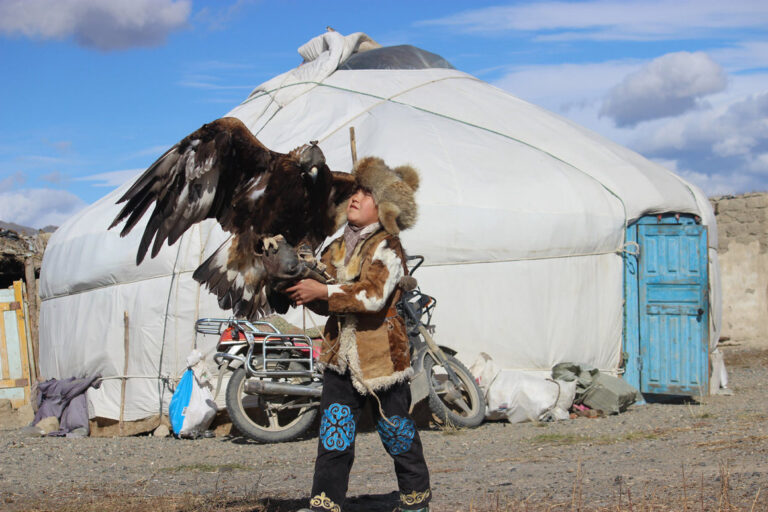Is This the End of Italy’s Iconic Valley of the Mills?
On a hot, sunny morning in June 2006, Reginald Van de Velde was walking in the center of Sorrento, the famous Italian town on the Gulf of Naples, when something struck him. “I was walking on a footbridge to get back to my car,” says the Belgian photographer, “and noticed something unusual under the bridge.” Intrigued, Van de Velde leaned out over the bridge’s protective fence. “Then I saw it, this haunting ruin completely covered in vegetation.”
Indeed, about 30 feet below Sorrento’s Via Fuorimura lies a deep gorge jacketed in lush, dense vegetation. At its center stands a six-story building, a mill that had been abandoned at the start of the 20th century. Thick layers of moss, sprawling ferns, and climbing, creeping plants of all sorts had enveloped the building, making it look more like a natural rock formation than a human artifact.
Van de Velde, who specializes in ruin photography, thought he had found one of the best “abandoned” shots of his career. He reached for his camera, but the battery was dead. Few hours later, in front of his laptop, he Googled “Sorrento abandoned ruin,” but not much came out.
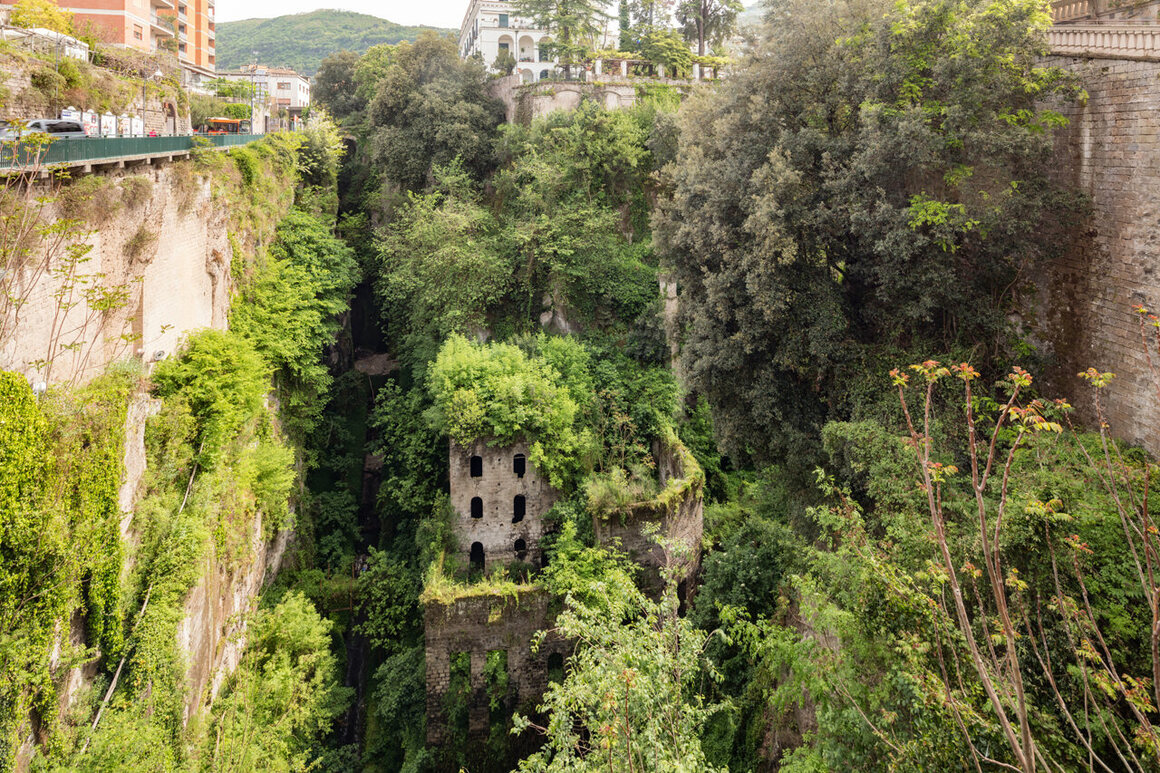
Nearly a decade later, that same ruin became one of the most famous abandoned places on the internet. In 2014 Instagram featured it as a “photo of the day,” attracting 300,000 comments. Atlas Obscura created an entry for it in 2015, and the next year Buzzfeed named it one of the world’s top “beautifully haunted abandoned places.”
Thousands of online comments echo the emotions described by Van de Velde: wonder, curiosity, a strong desire to see the place in person. More than 2,700 people have marked it “Want to Go” on Atlas Obscura, but only a few hundred report having been there. But getting there now is likely to leave a very different impression than the one Van de Velde had. Today, the much-loved ruin has lost its covering of vegetation and parts of its decaying structure, following a controversial restoration. In May 2020, in response to a backlash over the changes, local authorities stopped all work on the site. Few weeks later, Van de Velde reached out to Atlas Obscura to find out what the heck happened.
Located in the center of Sorrento, Il Vallone dei Mulini, or the Valley of the Mills, is a geological oddity. Like other gorges along the jagged Sorrentine coastline, it was formed some 35,000 years ago after the eruption of the Phlegraean Fields, an active volcano west of Naples. The lava flows created the dramatic cliffs and canyons that now form natural borders between the towns of Meta, Piano di Sorrento, Sant’Agnello, and Sorrento.
Unlike the other volcanic gorges of the peninsula that open to the sea, the Valley of the Mills was sealed off in 1866, when local authorities decided to build a piazza where the valley opened onto the coast. That portion of the gorge was filled with debris and volcanic tuff, covered with cement, and topped with pebbles. Piazza Tasso, now an iconic landmark of Sorrento, cut the valley from constant sea breezes, so the gorge has a microclimate unlike any other place on the Sorrentine Peninsula.
Humidity reaches 80 percent there, and vegetation started to fill the valley. But people have found it oppressive. A 16th-century warehouse and 19th-century mill, once bustling with millworkers, carpenters, and laundry women, were eventually abandoned. The humidity took over, helping spread a lush carpet of green over the abandoned structures.
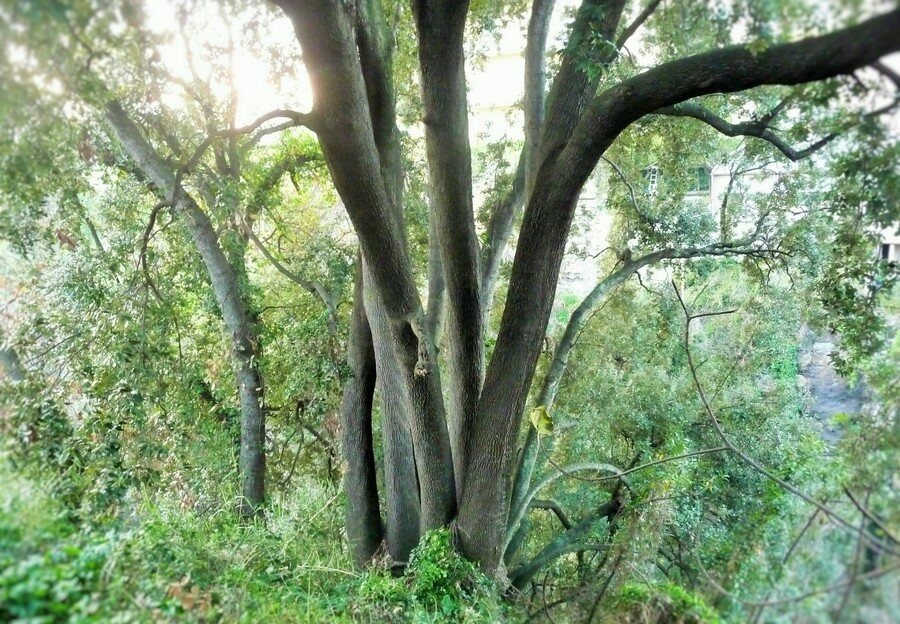
When approached from Sorrento’s city center, the valley appears to be a little enchanted kingdom of its own. The thick canopy of centuries-old holly oak block out honking cars and sputtering motorbikes, leaving an echoing soundtrack of chirping birds and buzzing bugs.
Much of the bottom of the valley is shaded by the walls and overstory, enhancing the sense of mystery and leading to speculation about who or what resides in the steamy realm. In the 19th century, local farmers believed that elves came out at night, lighting candles to ward off evil spirits. Recent surveys by the World Wide Fund for Nature (WWF) did not find elves, but rather rare owls and bats that found a hospitable habitat there. To them, the old structures were simply part of the landscape.
But recent restoration works have changed this. The mill has undergone a revamp that might as well be the architectural equivalent of the infamous, much-ridiculed Ecce Homo fresco in Spain, which was botched beyond recognition in an amateur restoration attempt.
Sorrento has been a travel destination since at least Roman times, when the wealthy started to build sumptuous vacation homes all along the peninsula. A plaque outside the Correale Museum, which hosts archaeological remains from Roman times to the 18th century, lists the names of the notable artists and writers who visited the city throughout the centuries: Johann Wolfgang von Goethe, Friedrich Nietzsche, and Leo Tolstoy, among others.
It was particularly during the second half of the 19th century that Sorrento became a spot for the emergent European middle class, according to Annunziata Berrino, a contemporary historian at the University of Naples. In an 1820 travel guide, English writer Mariana Starke promoted Sorrento as a “secluded paradise” where locals showed “great attention and kindness to foreigners” (something that is still true today).
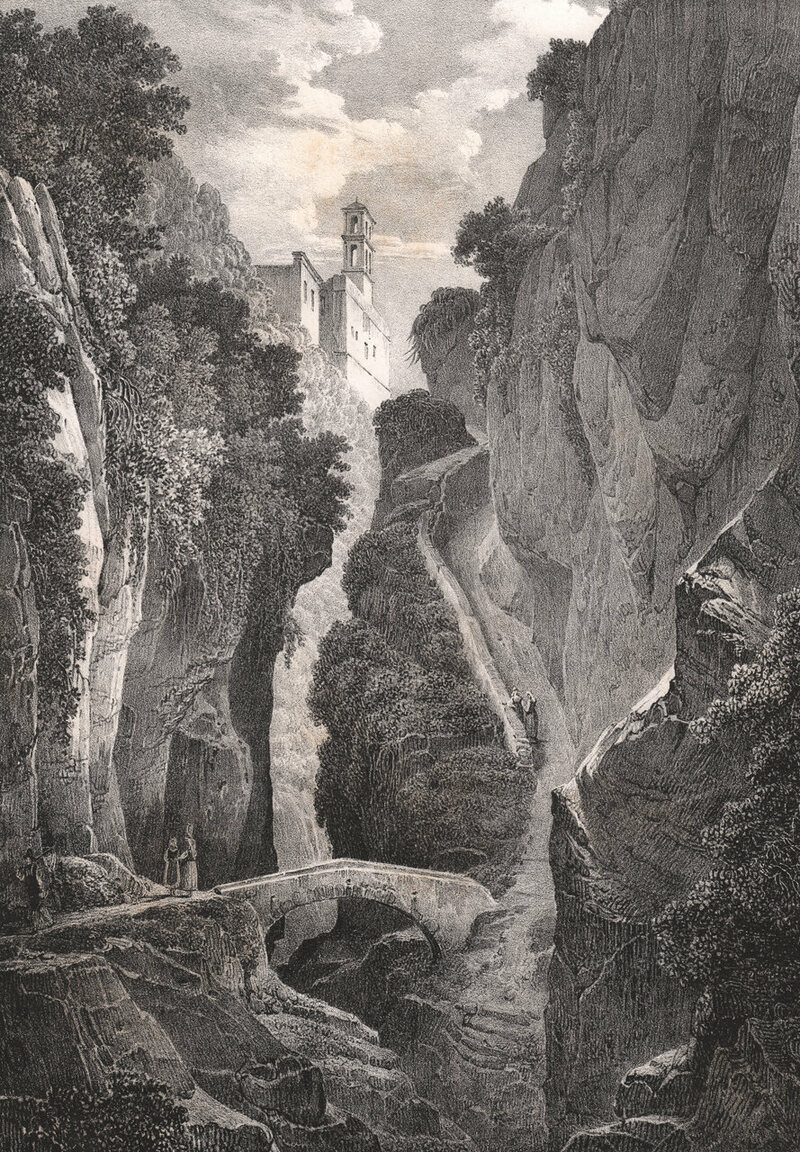
The Valley of the Mills played no small part in the town’s fame, even then. “In the 19th century, artists belonging to the Romantic movement traveled around Europe in search of landscapes that triggered strong emotions,” Berrino says. “The Valley of the Mills fitted with that aesthetic.”
English writer Octavian Blewitt cited the valley’s wildness as a must-see for artists, while French writer and painter Turpin de Crissé described it as being wrapped in a “mysterious undertone.” By the mid 1800s, images of the valley were being shared by the period’s Instagram—postcards sent all over Europe by enthusiastic visitors.
After Italy’s unification in 1861, travel around the country became easier, Berrino says, and Sorrento’s future as a tourist hub solidified. Locals started to put rooms up for rent, sailors created ad-hoc boat tours, and young men took jobs as porters.
An entry from a travelogue by theologian and travel writer Camillo Mapei in 1864 already described the town as “crowded” with tourists, mostly English ones. The issue only became more acute over time. Outside of the impact of the pandemic, “Sorrento is currently experiencing overtourism,” says Francesca Coppola, a graduate student in tourism management from Ca’ Foscari University in Venice, who wrote a thesis on the impact of tourism on the town. “Hospitality has developed at the expense of local livability and the environment.”
A quick walk around town reveals telling signs. The narrow cobbled streets of the historic city center are filled with gift shops, with nary a grocery store or local-filled cafe to be found. “Short term rentals have pushed residents out,” Coppola says, “and most natural sites are now home to restaurants or hotels.”
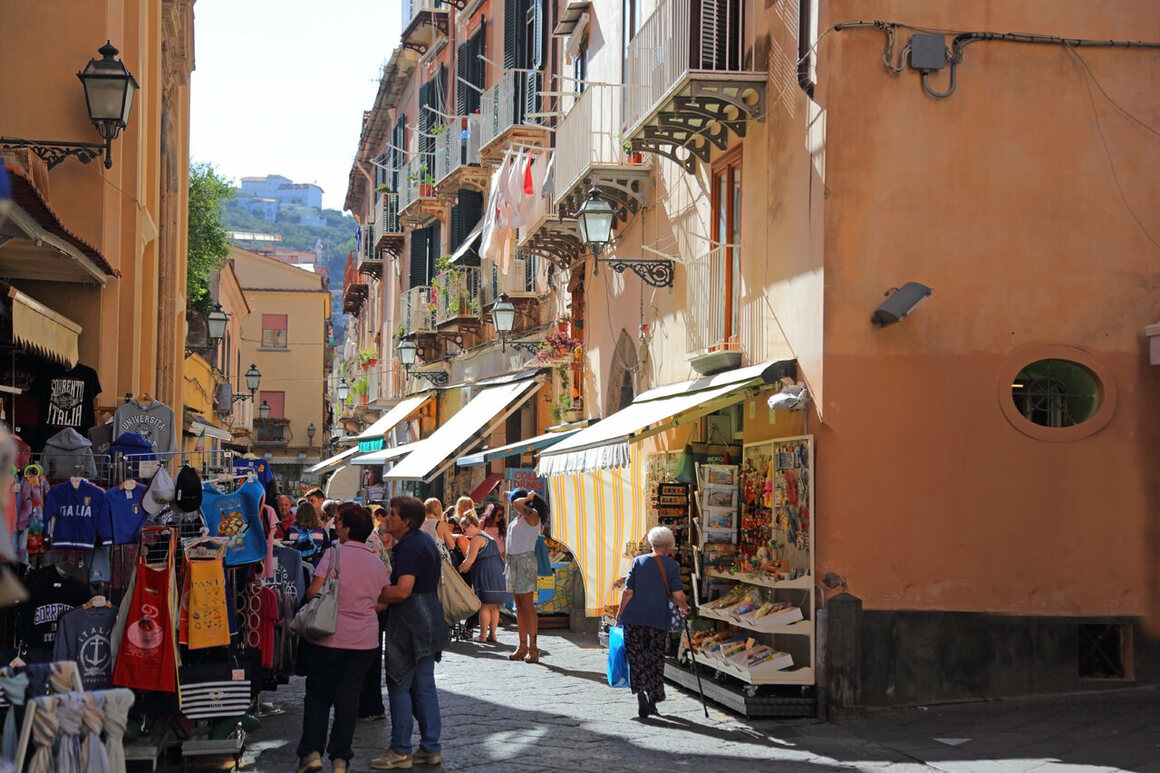
To most Italians, Sorrento is a town of lemons, specifically limonaie, the latticed groves of lemon trees used to make local and globally known liquor Limoncello. But rapid, tourism-driven urbanization led to their disappearance in the city, Coppola says. Many limonaie were turned into parking lots, and today the only one left in Sorrento proper is owned by the municipal government.
“We need to understand what is happening to the Valley of the Mills by looking at Sorrento’s wider economic context,” says Claudio D’Esposito, head of the local chapter of the WWF. “This was one of the very few sites that was not generating income from tourism and it does not surprise me that it eventually became a target for tourism developers.”
In 2019 local papers announced that the long-abandoned ruin of the Valley of the Mills was going to be restored to some kind of former glory. “The mill’s blades will turn again,” stated the local newspaper.
The news came as a shock to many locals. “Most people thought the mill belonged to the government,” Coppola says, adding that the municipal government used to light it up and put a nativity scene on its roof for Christmas, something that is usually done for public buildings only. Despite this widespread assumption, the mill had until recently been owned by the family that had built it in the 19th century, the Mathieus. Descendants of the original owners had put the mill up for sale in 2012.
The only bidder, a restoration company called Maccheronificio S.r.l., owned by Mariano Pontecorvo, secured the property for €300,000. Local environmental groups, including the WWF, see this deal as the source of much of the current controversy. “Local governments should have tried to take the building and turn it into a conservation site,” D’Esposito says, “But they did not even try to buy it.”
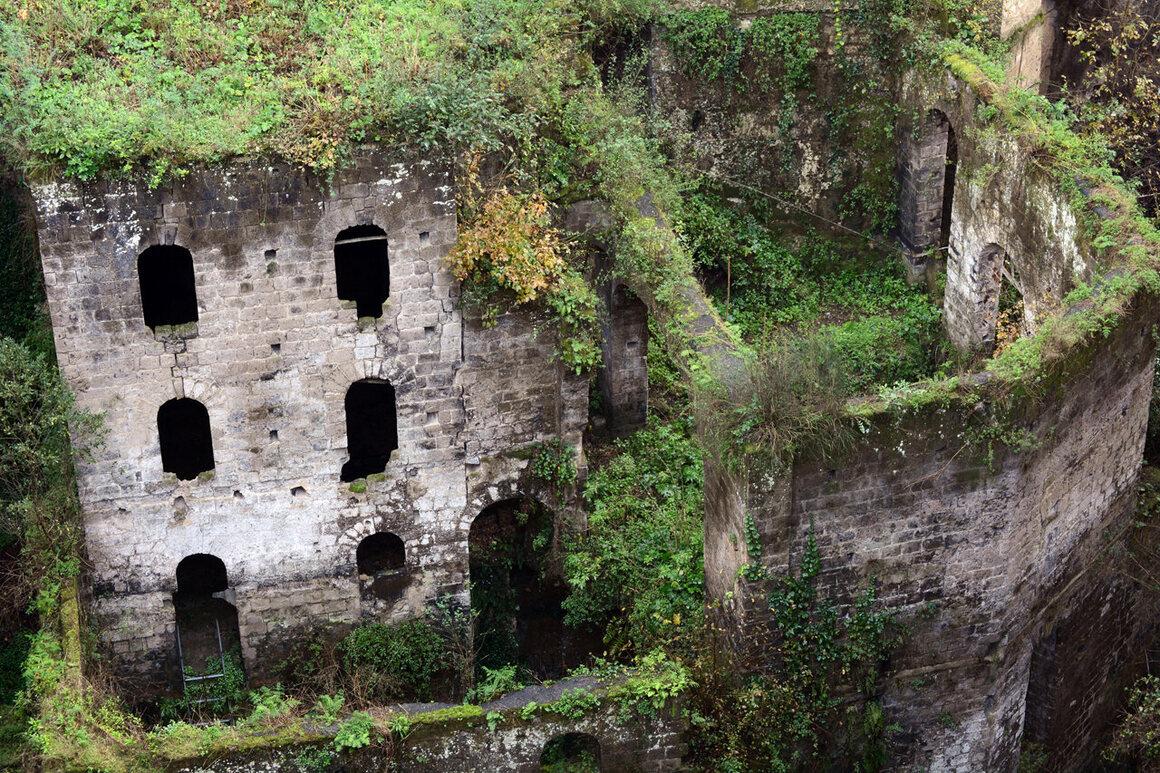
Right after the deal, the WWF lodged a complaint with Italy’s Ministry of Culture, citing a law that favors public bodies over private bidders in auctions of buildings of historic or artistic value. But because no local authority had even tried to make a deal, the complaint had no grounds.
For a few years, the new owners of the mill left the property untouched. But in 2019, a restoration plan was announced. Many observers in Sorrento and visitors from around the world, including Van de Velde, had hoped the restoration work would focus on preventing the ruin from collapsing. But the owners had a different idea in mind.
In March 2019, workers opened a path from the top of the gorge all the way down to the valley floor. Mini excavators were used to remove vegetation and clear the area around the abandoned building. Scaffolding went up, and when it was eventually removed, photos of the refurbished mill started to circulate online.
“I could not believe that it was the same building” Van de Velde says. “They removed all ferns, all moss, all vegetation was gone.”
One of the defining characteristics of the ruin was the way light filtered through its open windows, playing with leaves and shadow to add to the overall visual impact and sense of mystery. “Now, they put in modern windows and even ventilation systems” Van de Velde says. “It’s just not what I expected when I heard they were restoring it.”
He was not the only one who was profoundly disappointed. Mario Russo, an archaeologist who has worked on many sites in the Sorrentine Peninsula, says that owners should have opted for a “conservative” restoration. “The mill should have remained a ruin,” he says, “They should have prevented crumbling with as little changes as possible.”
Currently, the mill is in a transitional state. The overgrown vegetation is gone, the centuries-old volcanic tuff roof remade with cement. But it is not yet a fully functional refurbished building.
The restoration work also affected the delicate ecosystem of the valley. Vegetation has been cut back, including holly oaks that were removed to make way for excavators. “This will highly increase the risk of landslide,” D’Esposito says, as the trees played a vital role in stabilizing the soil and absorbing rainfall during storms.
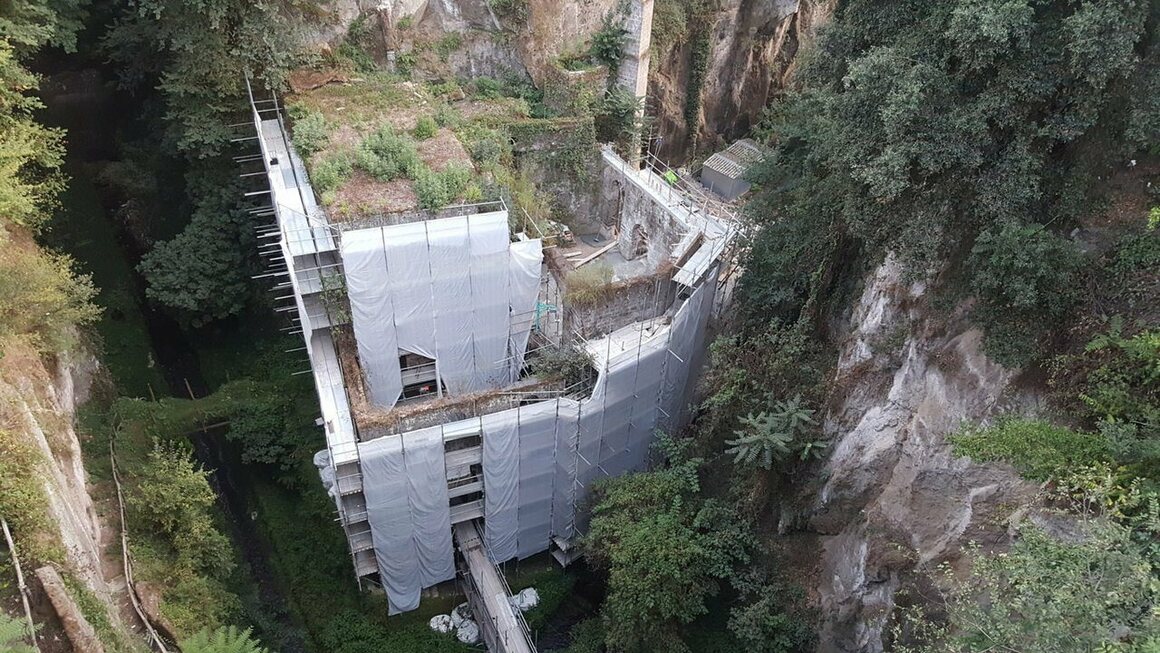
After gathering evidence of the environmental impact of the project, the WWF filed a lawsuit against Maccheronificio S.r.l. But by mid-March 2020, the pandemic came down on Italy like a hammer. It wasn’t until May that local authorities visited the site. After a quick inspection, they decided to put it under seizure and freeze all work at the site to run a investigation. “Restoration works have been conducted against local landscape protection laws,” prosecutors told national newspaper La Repubblica, adding that project documents failed to clearly explain the final goal of the restoration project.
As of March 2021, investigations are ongoing. The owner of the mill, Pontecorvo, believes that prosecutors will not find any wrongdoing. “We did not cut down any trees,” he says. “All we did was to remove infesting plants.” However, in photos shared by the WWF, the removal of a range of vegetation is evident. “They cut down many plants, including hornbeams, ash trees, and ferns,” D’Esposito says, “which poses a real risk to the many species that depend on those trees.”
Prosecutors also assert that the restoration works violated local heritage protection laws. However, the project had been approved by the local Soprindenteza, the government body tasked with monitoring projects that impact the country’s cultural patrimony. “When local supervisors approve a project it can be hard to block it further down the road,” Russo says. The real question, he says, is why it was approved in the first place.
Whatever the outcome of the investigation, the future of the Valley of the Mills has shifted, and where it goes will largely depend on which vision of “conservation” prevails. To the WWF and other environmental groups, the valley should remain untouched, save for minor interventions to prevent the collapse of the old mill. “This is the only place of Sorrento untouched by urbanization,” D’Esposito says, “It’s like a window on our geological past and it should be kept that way.”
According to Pontecorvo, the building should be a functioning mill once again, open to tourists (for a fee) and free for locals. “We want to reactivate the mill’s blade,” he explains, “and create a footpath that leads people down to the mill.”
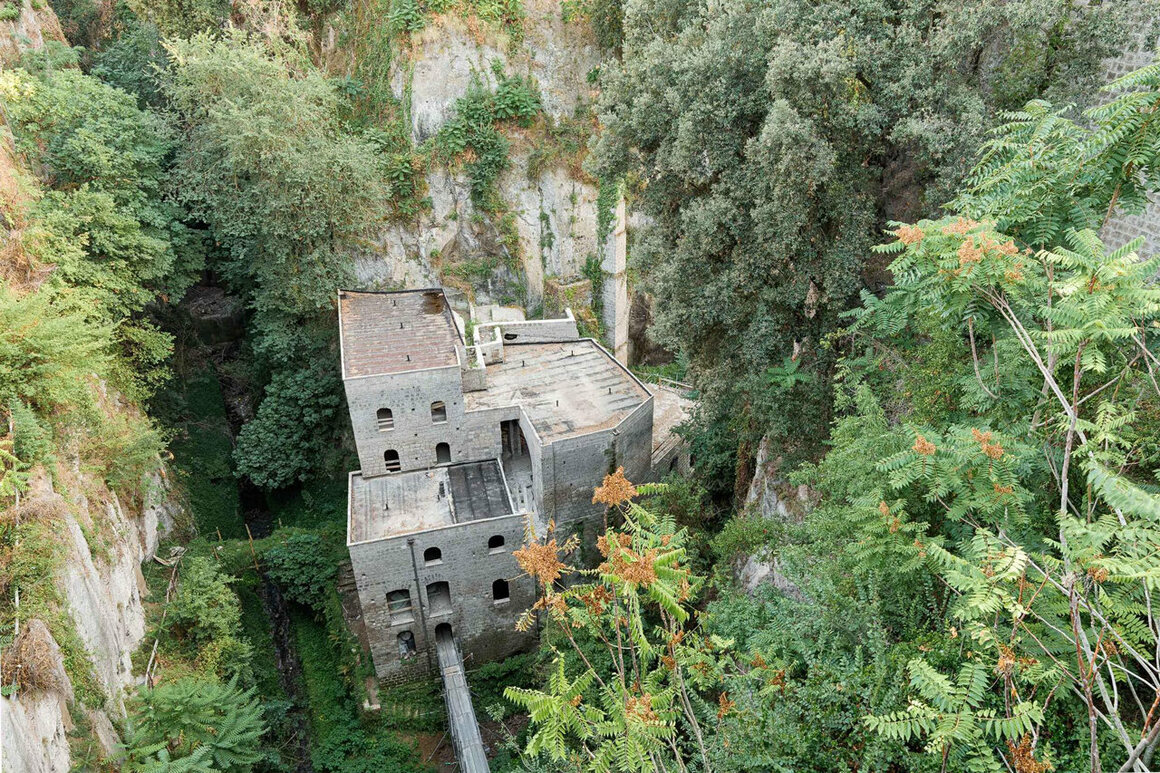
Of course, this proposition runs counter to the conditions that made this place stand out to countless artists and visitors for centuries, the otherworldly atmosphere that seemed to exist outside the flow of time itself, the way the human-made merged with ferns and moss, light and shadow. And there’s no guarantee that redevelopment of the mill will make the site any more appealing to visitors or locals. “Recreating a functional mill will inevitably mean losing the unique charm of this place,” Russo says, “and I doubt that it would be easy to bring people inside the building given its humidity.”
Berrino, who has curated a digital archive about artistic and historical records of the valley, believes that the mill could be open to the public, but without putting the surrounding ecosystem at risk. “I have proposed something like a suspended bridge,” says D’Esposito, who is also not opposed to finding a sustainable way for visitors to take a closer look at the ruin.
For now, the building remains in private hands, but the recently elected mayor of Sorrento, Massimo Coppola, believes that his government can put pressure on the owners to preserve its identity somehow. “We will fight to prevent further modifications to the mill,” he says, “and for the unique character of the place to be preserved.”
Tourism experts such as Coppola believe that fans from around the world could play a big role in what happens next. “If enough people will advocate for a conservative restoration, stakeholders will pay attention,” she says, citing the example of Poveglia, an island near Venice that was put up for sale in 2014 and was eventually declared a public good and preserved after a petition was signed by more than 4,000 people. “Tourism can be a precious resource, as long as it does not put at risk the authenticity of this place.”
